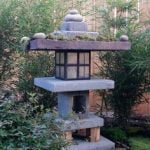Are you looking to enhance the beauty and functionality of your outdoor space? Look no further than landscape stone ideas. From gravel to limestone, there are countless options for incorporating stones into your landscaping to create a stunning and durable environment. In this article, we will explore the various types of landscape stones, how to choose the right one for your project, and creative ideas for using them in different parts of your outdoor space.
When it comes to landscaping, stones play a crucial role in adding texture, color, and structure to your outdoor environment. Not only do they provide visual interest, but they also serve practical purposes such as creating paths, defining garden borders, and accenting certain features. Whether you’re redesigning your entire outdoor space or just looking for a few small changes with big impact, landscape stone ideas can take your landscaping to the next level.
In the following sections, we will delve into the different types of landscape stones available – from gravel to flagstone to granite – and discuss how each type can be used effectively in your landscaping project. We’ll also explore factors to consider when choosing the right stone for your specific needs, as well as maintenance tips to keep your stone looking great for years to come.
So if you’re ready to transform your outdoor space with beautiful and functional landscape stone ideas, read on for inspiration and valuable tips.
Types of Landscape Stones
When it comes to landscaping, the type of stone you choose can make a big difference in the overall look and feel of your outdoor space. Here are some popular options for landscape stone ideas:
1. Gravel: Gravel is versatile and great for drainage. It comes in various sizes and colors, making it a popular choice for pathways, driveways, and even as a ground cover in garden beds.
2. River rock: Smooth and rounded, river rocks can add a natural element to your landscape design. They come in different sizes and colors, making them perfect for creating dry river beds or adding visual interest to flower beds.
3. Flagstone: Flagstone is a durable and flat stone that is perfect for creating walkways, patios, or even outdoor living spaces. It comes in a variety of earthy tones and can be arranged in different patterns to create unique designs.
4. Limestone: Limestone is a popular choice for landscaping due to its natural beauty and durability. It can be used for pathways, retaining walls, or even as a decorative feature in gardens.
5. Slate: Slate is known for its versatility and can be used for everything from walkways to water features. Its smooth surface and rich colors make it an attractive option for adding visual interest to any landscape design.
6. Granite: Granite is one of the hardest natural stones available, making it perfect for high-traffic areas like walkways and patios. Its durability and range of colors make it a great option for adding texture and contrast to your outdoor space.
These are just a few options when it comes to landscape stone ideas, but there are many more types of stones available that can add beauty, functionality, and character to your outdoor space. Whether you’re looking to create a peaceful garden retreat or a stunning backyard oasis, the right stone can make all the difference in achieving your desired look.
Choosing the Right Stone for Your Landscape
When it comes to choosing the right stone for your landscape, there are several factors that should be taken into consideration in order to achieve the desired aesthetic and functionality. One of the first things to consider is the color of the stone.
Whether you’re looking for something neutral and understated or a bold, eye-catching statement piece, the color of the stone you choose will have a significant impact on the overall look of your landscape. For example, lighter colored stones like limestone can create a bright and airy feel, while darker stones like slate can add a sense of depth and drama.
In addition to color, size is another important factor when selecting landscape stones. Larger stones such as boulders can create a striking focal point in your outdoor space, while smaller stones like gravel can be used to create intricate patterns and textures.
The size of the stones you choose will also depend on the specific area of your landscape where they will be used – for example, larger stones may be more suitable for creating a border around a garden bed, while smaller stones may work better for pathways or walkways.
Texture and shape are also crucial factors to consider when choosing landscape stones. Textured stones like river rock or granite can add visual interest and dimension to your landscape, while smooth stones such as flagstone can create a more polished and refined look.
The shape of the stones you choose will depend on how you plan to use them – irregularly shaped rocks might be ideal for creating a natural-looking rock garden, while uniformly shaped bricks could be used to construct a tidy retaining wall.
| Factors | Considerations |
|---|---|
| Color | Neutral vs bold; impact on overall look |
| Size | Focal point vs intricate patterns; suitability for specific areas |
| Texture and Shape | Visual interest and dimension; natural vs tidy look |
Landscape Stone Ideas for Paths and Walkways
When it comes to creating paths and walkways in your landscape, using stone can be a great option. There are numerous landscape stone ideas that can help you create a beautiful and durable path that adds character and charm to your outdoor space. Whether you’re looking for a rustic, natural look or a more polished and modern aesthetic, there is a type of landscape stone that will fit your needs.
One popular choice for pathways is flagstone. This versatile and durable material comes in various shapes and sizes, allowing for creative designs that fit seamlessly into any landscape. Another option is using gravel, which provides excellent drainage and a casual, relaxed look perfect for informal paths. For a more formal or elegant feel, slate or limestone can be a great choice. These stones offer a smoother surface and come in a variety of colors to complement any design.
It’s important to consider the size, shape, color, and texture of the stone when creating paths and walkways. The right combination of these factors can make all the difference in achieving the desired look for your landscape. By carefully selecting the type of stone, as well as its placement and arrangement, you can create a path that not only serves its practical purpose but also enhances the overall appearance of your outdoor space.
| Landscape Stone Type | Description |
|---|---|
| Flagstone | Versatile material available in various shapes and sizes perfect for creative designs. |
| Gravel | Offers excellent drainage with a casual, relaxed look ideal for informal paths. |
| Slate or Limestone | Provides smooth surfaces with different color options suitable for more formal or elegant designs. |
Using Landscape Stones for Garden Borders
When it comes to adding definition and structure to your garden beds, landscape stones can be a versatile and visually appealing option. From traditional edging to creative designs, there are numerous ways to incorporate landscape stones into your garden borders. Here are some creative ideas to consider:
- Traditional Stone Edging: One of the most common uses for landscape stones in garden borders is creating a traditional edging that helps define the shape of the bed. This can be achieved with simple gravel or river rock, or you can opt for a more formal look with cut stone or brick edging.
- Layered Border Walls: For a more dramatic effect, consider building layered walls using different types and sizes of stone. This creates depth and visual interest, especially when incorporating taller plants within the garden beds.
- Mosaic Stone Borders: Get creative with your garden borders by arranging different types of landscape stones in a mosaic pattern. This can add a unique touch to your landscaping while still providing practical delineation for your plants.
- Mixed Materials: Combine landscape stones with other materials such as wood or metal for an eclectic and modern look. For example, pairing slate or flagstone with sleek metal edging can create a contemporary border for your garden beds.
Ultimately, the key is to choose landscape stone ideas that complement the overall style and aesthetic of your outdoor space while also serving the practical purpose of defining and accentuating your garden beds. With the right selection and design, landscape stones can truly enhance the beauty of your landscaping.
Stone Accents for Landscaping
When it comes to enhancing your outdoor space, incorporating landscape stones into your landscaping can add a unique and aesthetically pleasing touch. One great way to do this is by using stone accents such as rock gardens, water features, and retaining walls. These features not only add visual interest but also serve practical purposes in your outdoor environment.
Rock Gardens
Rock gardens are a fantastic way to incorporate landscape stones into your outdoor space. They can range from small, simple arrangements to larger, more intricate designs. You can use a variety of stones such as gravel, river rock, limestone, or slate to create a visually appealing rock garden. By carefully selecting and arranging the stones, you can create a beautiful and low-maintenance landscape feature that adds texture and dimension to your garden.
Water Features
Another creative way to incorporate landscape stone ideas into your outdoor space is through the addition of water features. Whether it’s a serene pond, a charming waterfall, or an elegant fountain, using natural stone for these elements can add an organic and soothing feel to your landscape. Stones like granite or flagstone can be used to build the structure of the water feature and create a stunning focal point in your outdoor environment.
Retaining Walls
For landscapes with sloped areas or uneven terrain, incorporating retaining walls made of landscape stones can serve both functional and decorative purposes. Retaining walls help prevent soil erosion and create flat surfaces for planting or seating areas. Additionally, they can be designed using different types of stones like limestone or granite to add visual interest and character to your yard while providing structural support.
Incorporating these stone accents into your landscaping will not only enhance the beauty of your outdoor space but also add durability and longevity to your design. Whether you choose rock gardens, water features, or retaining walls, there are endless possibilities for creating a cohesive and visually stunning landscape using different types of landscape stones.
Maintenance and Care of Landscape Stones
Regular Cleaning and Maintenance
One of the most important aspects of caring for landscape stones is regular cleaning and maintenance. This can involve removing debris, dirt, and weeds from the surface of the stones to keep them looking their best. Using a pressure washer or simply scrubbing with a brush and water can help to remove built-up grime and maintain the natural beauty of the stones.
Weed Prevention
An essential part of maintaining landscape stones is preventing weed growth between the cracks or in the surrounding areas. Using landscaping fabric beneath the stones can help prevent weeds from growing through, while applying a weed deterrent product on a regular basis can also be effective. By keeping weeds at bay, your stone landscaping will look clean and well-maintained.
Sealing and Protecting
Depending on the type of landscape stone you have chosen, it may be necessary to seal and protect it to ensure longevity and durability. Sealing products are available for various types of stone to protect them from staining, moisture penetration, and other environmental factors that could cause damage. Regularly inspecting your landscape stones for signs of wear or damage can help identify when resealing or other protective measures may be needed.
Showcase of Landscape Stone Ideas
In conclusion, there are numerous landscape stone ideas that can elevate the aesthetic appeal of your outdoor space. From gravel to granite, there is a wide range of options to choose from when designing your landscape. The use of landscape stones not only adds visual interest but also provides durability and low maintenance, making it an ideal choice for many homeowners.
When selecting the right stone for your landscape, it’s important to consider factors such as color, size, texture, and shape. These elements can greatly impact the overall look and feel of your outdoor area. Whether you’re creating paths and walkways, defining garden borders, or incorporating stone accents into your landscaping features, each choice you make will contribute to the overall ambiance of your exterior space.
Incorporating landscape stones into your outdoor design can truly transform your property into a stunning and inviting environment. By taking proper care and maintenance measures, these stones will continue to enhance the beauty of your landscape for years to come.
The showcase of landscape stone ideas provides real-life examples and photos that inspire creativity in utilizing different types of stones to create breathtaking landscapes that leave a lasting impression on all who see them. So whether you’re looking to create a cozy pathway or a tranquil water feature, there are endless possibilities when it comes to using landscape stones in your outdoor design.
Frequently Asked Questions
What Kind of Stone Is Best for Landscaping?
The best kind of stone for landscaping depends on the specific aesthetic and functional goals of the project. For a more natural look, many people opt for local fieldstone or flagstone, while others prefer the clean lines of granite or limestone.
Each type of stone has its own unique characteristics and advantages, so it’s important to consider factors like color, texture, durability, and cost before making a decision.
What Is the Most Popular Landscape Stone?
The most popular landscape stone varies by region and personal preference, but some commonly used options include pea gravel, river rock, and decomposed granite. These types of stones are favored for their versatility, ease of maintenance, and ability to complement a wide range of landscaping styles.
Ultimately, the popularity of a landscape stone depends on its availability and suitability for the specific project.
What Color Rock Is Best for Landscaping?
The best color rock for landscaping ultimately comes down to the desired look and feel of the outdoor space. Neutral-colored rocks like gray, tan, and brown are often chosen for their ability to blend in with natural surroundings and provide a timeless aesthetic.
However, bolder choices such as red or black can add dramatic contrast to the landscape design. It’s important to take into account existing elements such as plants, hardscape features, and architecture when selecting the color of rock for landscaping.

Welcome to my gardening blog! I am passionate about plants and enjoy sharing my knowledge and experiences with others. In this blog, I will write about everything related to gardening, from tips on how to get started to updates on my own garden projects.





